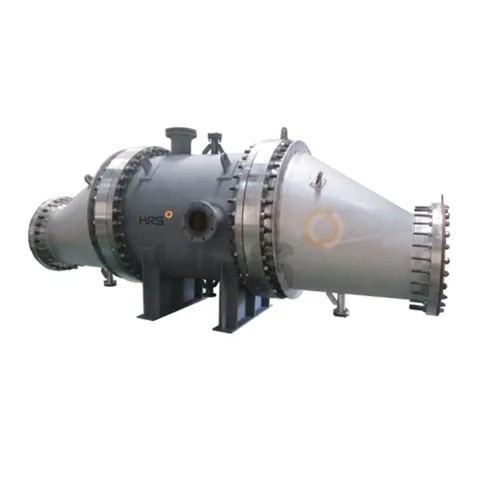Introduction
Heat Exchangers for Fertilizer plants are highly energy-intensive facilities that involve complex chemical processes to produce essential nutrients such as ammonia, urea, and phosphates. These processes generate substantial amounts of heat, which must be efficiently managed to ensure smooth operations, energy conservation, and environmental sustainability. Heat exchangers play a crucial role in these plants by facilitating heat transfer between different fluids, enabling efficient cooling, heating, condensation, and heat recovery. Effective thermal management is vital for optimizing production efficiency, maintaining product quality, and reducing operational costs. By integrating well-designed heat exchanger systems, fertilizer manufacturers can improve energy utilization, enhance process stability, and meet stringent environmental regulations. Whether it’s cooling process gases, recovering waste heat, or preheating raw materials, heat exchangers significantly contribute to the reliability and efficiency of fertilizer production.
Key Applications of Heat Exchangers in Fertilizer Plants
Cooling of Process Gases in Ammonia and Urea Production
- In ammonia production, high-temperature synthesis gas (a mixture of hydrogen and nitrogen) needs to be cooled after compression and catalytic reactions.
- Heat exchangers help in rapidly cooling the gas before it undergoes further processing or storage.
- In urea production, ammonia and carbon dioxide react under high temperatures, and the resulting process stream needs efficient cooling to maintain system efficiency.
Heat Recovery from Process Streams
- Fertilizer plants generate a large amount of waste heat from various process streams.
- Heat exchangers are used to capture this waste heat and reuse it for preheating raw materials, reducing overall energy consumption.
- This improves fuel efficiency and decreases operational costs.
Condensation of Vapors in Chemical Reactions
- During fertilizer production, various chemical reactions release vaporized byproducts.
- Heat exchangers help condense these vapors into liquid form, which can then be reused or safely removed from the system.
- This is crucial in minimizing environmental pollution and maximizing resource utilization.
Preheating of Raw Materials for Enhanced Efficiency
- Preheating raw materials like air, water, or chemical feedstocks before they enter reactors improves reaction efficiency.
- Heat exchangers utilize recovered waste heat to preheat these inputs, reducing the energy required for further heating.
- This leads to better thermal efficiency and lower operational expenses.
Cooling of Compressor and Turbine Systems
- Fertilizer plants use large compressors and turbines in their processes, such as in ammonia and nitric acid production.
- These machines generate significant heat, which needs to be efficiently dissipated to maintain performance.
- Heat exchangers help in cooling these systems, preventing overheating and ensuring smooth, continuous operation.
Types of Heat Exchangers Used in Fertilizer Plants
Shell and Tube Heat Exchangers
- Most commonly used due to their high-pressure and high-temperature handling capabilities.
- Consist of a series of tubes enclosed within a cylindrical shell, allowing heat transfer between fluids.
- Suitable for handling corrosive fluids by using materials like stainless steel or titanium.
- Used in process gas cooling, steam condensation, and heat recovery applications.
Plate Heat Exchangers
- Composed of multiple thin metal plates with large surface areas for efficient heat transfer.
- Compact and highly efficient, making them ideal for applications where space is limited.
- Used for liquid-to-liquid heat exchange, such as cooling water and chemical solutions.
- Easier to clean and maintain compared to shell and tube exchangers.
Air-Cooled Heat Exchangers
- Used in locations where water availability is limited or expensive.
- Heat is transferred to the air through finned tubes and dissipated using fans.
- Commonly used for cooling hot gases and steam before they exit the process.
- Reduces dependency on water-based cooling systems, making it a sustainable choice.
Benefits of Using Heat Exchangers in Fertilizer Plants
Improved Energy Efficiency
- Heat exchangers help recover and reuse waste heat generated in various processes, reducing the need for additional fuel or energy input.
- Preheating raw materials using recovered heat lowers the overall energy consumption in chemical reactions.
- Optimized heat transfer ensures minimal energy loss, making the plant operations more sustainable and cost-effective.
Enhanced Process Stability
- Precise temperature control is essential in fertilizer production, especially in ammonia and urea synthesis, where reactions require specific temperature conditions.
- Heat exchangers ensure stable and uniform heat distribution, preventing sudden temperature fluctuations that could affect product quality.
- Maintaining optimal thermal conditions leads to improved reaction rates, better yield, and reduced risk of process inefficiencies.
Reduced Environmental Impact
- By recovering waste heat and reducing the need for external energy sources, heat exchangers help lower greenhouse gas emissions from fertilizer plants.
- Efficient condensation and cooling of process vapors minimize the release of harmful pollutants into the atmosphere.
- Proper thermal management also reduces water consumption in cooling processes, making operations more environmentally friendly.
Longer Equipment Lifespan
- Overheating and thermal stress can cause significant wear and tear on machinery such as compressors, turbines, and reactors.
- Heat exchangers prevent excessive temperatures by efficiently removing heat from critical equipment, reducing thermal fatigue and mechanical failures.
- Regular use of heat exchangers enhances the durability of plant equipment, reducing downtime and extending service life.
Conclusion
Heat Exchangers for Fertilizer Plants are indispensable components in fertilizer plants, ensuring efficient thermal regulation in critical production processes. Their ability to recover waste heat, control reaction temperatures, and optimize energy consumption makes them essential for cost-effective and sustainable operations. By using the right type of heat exchangers—whether shell and tube, plate, or air-cooled—fertilizer manufacturers can achieve improved productivity, reduced emissions, and extended equipment lifespan. With increasing global demand for fertilizers, manufacturers must focus on energy-efficient solutions to remain competitive. Investing in high-quality heat exchanger systems not only enhances plant performance but also contributes to a greener and more sustainable industrial future. By optimizing heat transfer mechanisms, fertilizer plants can achieve long-term operational efficiency while minimizing environmental impact.

